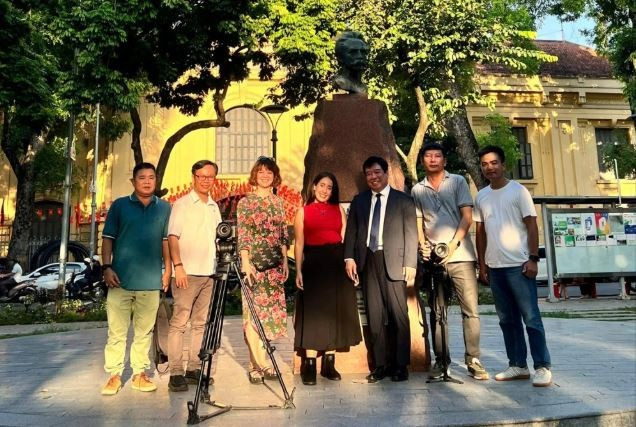 Life & Style
Life & Style

The recent Việt Nam Fashion Week honoured collections made from natural material, including the tough, long-wearing hemp fibre. It was the first time most collections of the fasion week were designed with Vietnamese natural materials.
 |
The recent Việt Nam Fashion Week honoured collections made from natural material, including the tough, long-wearing hemp fibre. It was the first time most collections of the fasion week were designed with Vietnamese natural materials.
Minh Hạnh, founder of the fashion week, introduced her collection made from hemp fibre. One of the leading designers in Việt Nam, she was born in 1961 in the Central Highlands city of Pleiku. After graduating from HCM City Fine Arts College she became a professional fashion designer. She’s well-known for creative designs that have won her international awards.
She has also organised many fashion shows around the world and nurtured young designers and the fashion market in Việt Nam. She has been awarded the title Knight of Arts and Letters (Chevaliers des Lettres et des Arts) by the French government and Japan’s Fukuoka Prize for Arts and Culture.
Collections by Hạnh not only represent Vietnamese fashion, but also culture. She spoke about hemp fibre that she used for her collection.
Tell us more about the natural material-made collections displayed during the week.
Natural materials such as silk, cotton and linen are the first choice of designers because they are adaptable and eco-friendly. Vietnamese designers have made great efforts to work with artisans and producers to produce cloth from natural materials that aim to promote natural materials and develop traditional weaving villages.
The natural materials the designers used are not only symbols of national pride, but are also practical and desirable. They include traditional natural rare materials such as tussore (a kind of silk, according to Oxford Dictinaries: coarse silk from the larvae of the tussore moth and related species) from Nam Cao Village and silk from Nhật Minh; Bảo Lộc; Nha Xá villages and many others.
The hemp fibre for fashion week came from Thiên Ấn Village in the central province of Quảng Ngãi and An Phước Village in the central province of Thanh Hóa. The collections were made totally from cloth that had not been dyed.
Do you have any stories about using hemp fibre?
Trần Văn Minh, Party deputy-secretary for the central province of Quảng Ngãi, remembers that when he was a child, his mother used hemp fibre to repair his tattered clothes. He said hemp fibre was strong. Silk can be torn, but hemp fibre is tough and can only be cut with scissors.
Additionally, hemp fibre is weather and mould resistant. It is also not damaged by weather and does not go mouldy.
What is the advantage of the cloth?
Hemp is strong and long lasting. It does not crease and allows air to flow through. Việt Nam exports hemp textiles to South Korea, the United States, the Netherlands, Thailand and Germany. An American military uniform made from hemp fibre is worth about US$2,000 and lasts about seven to 10 years.
Hemp takes about 10 years to mature and can then be harvested about four times a year. All parts of the shrub are used, including leaves for cake, roots for herbal medicine and trunks for fibre.
However, hemp fibre has not been woven into cloth. People just use hemp fibre as a strong and tough string to tie something in daily life.
Hemp is among the top natural materials, along with silk, linen and cotton.




